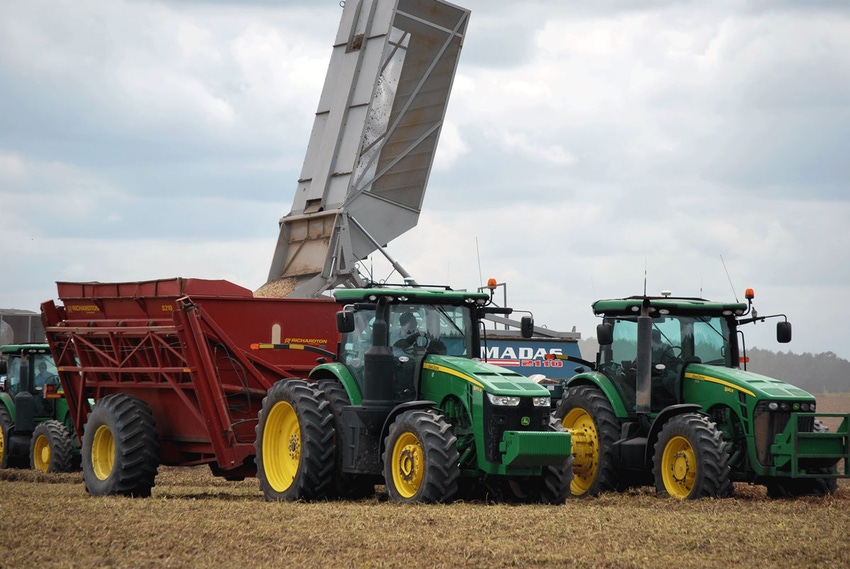
If peanut farmers produce as many peanuts in 2016 as they did in 2015, there will not be enough room in federally licensed warehouses to store the crop, according to a white paper released Feb. 23 by the National Center for Peanut Competitiveness.
The concern over warehouse capacity began brewing last year when the peanut industry realized just how large the surplus of peanuts might be going into the 2016 peanut season.
“Given that cotton does not have a commodity program and only relied on crop insurance for its safety net, the recent and forecasted extremely low cotton prices coupled with the other commodities’ low prices has forced Southern farmers to look towards peanuts as the safety net for their farming operations. These factors led to an increased 2015 peanut production, which has created an expected excess supply of peanut for 2016,” the NCPC paper says.
According to USDA's Economic Research Service, as referenced by NCPC, national peanut stocks are forecasted to be 1.44 million tons by Aug. 1, the date which starts the 2016/2017 peanut marketing year. This level of stocks would be an historical high.
“The supply situation coupled with expected low prices for alternative competitive crops have become a concern for the peanut industry as it relates to needed storage capacity,” the paper says.
Half of U.S. production
Georgia produces half of the U.S. peanut production each year. The NCPC estimates 807,000 tons of farm stock peanuts to be in storage in Georgia. “This is more than 200,000 tons above the previous year’s beginning stocks. This is due to an increase of 24 percent of acres harvested and a high yield per acre of 4,470 pounds resulting in a record 2015 peanut crop of 1.74 million tons,” the papers says.
Though peanut warehouse capacity in Georgia has increased in recent years, if Georgia farmers plant and harvest as many peanuts as they did last year, the state faces almost 400,000 tons of deficit storage capacity for the 2016 crop.
For the latest on southwest agriculture, please check out Southwest Farm Press Daily and receive the latest news right to your inbox.
For the Southeast region, a deficit in storage capacity of 627,000 tons is estimated if the region’s peanut farmers produce as much of their crop as they did in 2015.
“This confirms that the Southeast region will be facing a difficult logistic situation under this scenario," the NCPC paper says. "Industry must consider different alternatives in order to mitigate this potential risk,” .
National Center for Peanut Competitiveness is a University of Georgia-based group led by Dr. Stanley Fletcher.
Marketing loan encumbrance
The lack of warehouse capacity this year might hamper some growers’ ability to enroll their peanuts into the Commodity Credit Corp. marketing loan program. To participate, a farmer must store his peanuts in an approved warehouse or an on-farm facility.
According to USDA's Farm Service Agency, to be eligible for a Peanut Marketing Assistance Loan or Loan Deficiency Payment, the peanuts must:
Have been produced and harvested by an eligible producer and be in storable condition.
Be merchantable for feed, food or other uses as determined by CCC.
Meet the specific commodity eligibility requirements for nonrecourse loans.
Be one of the following types: Virginia, Runner, Spanish or Valencia.
Not have been shelled or crushed.
Be inspected and graded if warehouse-stored.
Be inspected and graded upon delivery if farm-stored.
Farmer Storage Facility Loans, through FSA, are available and provide low-interest financing for producers to build or upgrade farm storage and handling facilities.
About the Author(s)
You May Also Like






